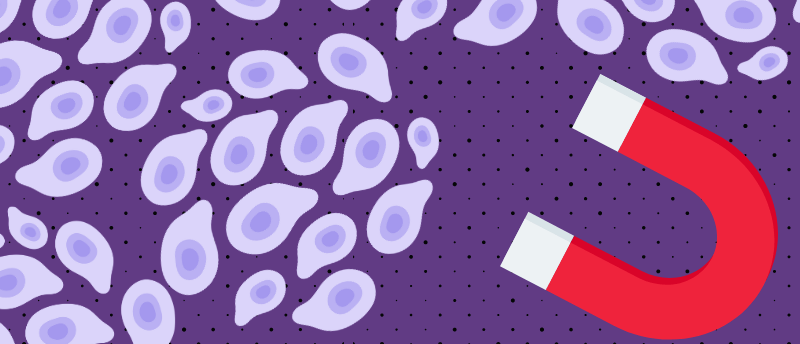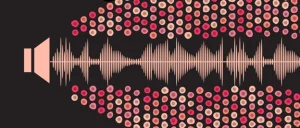Small but mighty: Alicia El Haj discusses magnetic nanoparticles

 Alicia El Haj is the Interdisciplinary Chair of Cell Engineering and Director of the Institute of Translational Medicine at the University of Birmingham (UK). Here she discusses her interests in using magnetic nanoparticles for tissue engineering applications and draws attention to the challenges, benefits and what the future holds for these minuscule but powerful molecules.
Alicia El Haj is the Interdisciplinary Chair of Cell Engineering and Director of the Institute of Translational Medicine at the University of Birmingham (UK). Here she discusses her interests in using magnetic nanoparticles for tissue engineering applications and draws attention to the challenges, benefits and what the future holds for these minuscule but powerful molecules.
Read the full interview below.
Could you summarize your research journey to date?
My research interests have centered around tissue engineering, cell engineering and the way we can grow various models of tissues ex vivo for applications in regenerative medicine.
A lot of my research journey has been understanding how we can engineer cells — like primitive or progenitor cells — to grow tissues outside and inside the body. By taking cells and growing them in vitro on special environments, which contain different materials, growth media and mechanical environments, we can look at what factors we have to add, manipulate and optimize to grow mature tissue. Those factors can include biological factors, like growth factors, or physical factors like mechanics or stimulation from fluid flow.
The key element of these in vitro models and engineered tissues is that we want to use them to develop advanced therapies for cureless, degenerative diseases like osteoporosis. By using biological strategies for therapies, of cells or 3D tissues grown ex vivo, we hope to implant them to regenerate new growth of degenerated tissues.
What are magnetic nanoparticles and why are you so interested in them?
Magnetic nanoparticles are small particles that range from 20 nm to 2 µm. They have a magnetic inner core, typically magnetite or iron oxide, which is coated in a biologically compatible material like dextran or silica to which biological molecules can be attached. The core allows you to use remote magnetic fields to control what the magnetic nanoparticles do.
We have looked at tissues like bone and cartilage through to the brain and peripheral nerves. These magnetic nanoparticles work right across the board as you can attach different tags on the outside membrane to tailor them to different tissues. We use different molecules, either antibodies, peptides or aptamers, which can bind onto the cell surface and allow us to control these therapeutic cells to treat diseases such as osteoarthritis and osteoporosis.
Multiple and different types of magnetic nanoparticles can be used in the same system at the same time and you can tailor different sizes of particles to deliver different functions within the system as well.
Magnetic nanoparticles give us a whole toolkit for how we can engineer tissues, both in vitro but also in vivo as a therapeutic platform.
How can magnetic nanoparticles be used?
There are several things you can do with these particles. You can use them as a targeted delivery system where you can deliver agonist substances or particular proteins into either in vivo or in vitro setups. You can also use them to label cells for imaging because of their high contrast, for instance in magnetic resonance imaging.
We can also use them for actuation: using magnetic nanoparticles to trigger receptors on the cell membrane. We tag these particles to a mechanosensitive ion channel on the cell membrane, such as PIEZO or TREK proteins, and apply a remote magnetic field gradient.
This gradient moves the particle, exhibiting a force on the receptor that opens it, leading to downstream processes that activate the cell. We have shown that in a stem cell, if you tag a TREK-1 channel you can mechanically trigger that receptor, which results in differentiation into a mature phenotype.
Essentially, what you are doing in a tissue engineering or regenerative medicine context is remotely controlling the way cells differentiate in vitro or in vivo. We are aiming to take this to patients and are currently examining this methodology in the regeneration of bone in an orthopedic setting.
What are some of the major challenges for the use of this technology?
There are challenges in optimizing the magnetic fields as well as localizing the magnetic nanoparticle to the target site, especially when the target site is deep within the patient.
Another challenge is patient acceptance. It is important that people see these magnetic nanoparticles as a therapeutic solution that can be used routinely. To encourage patient acceptance, we ran an exhibition at the (4–9 July; London, UK) last year where we talked to almost 8000 people about magnetic nanoparticles and explained how we use them. It was exciting to see that people were keen to have them used and were thrilled about the potential for combatting diseases.
What are the greatest benefits of magnetic nanoparticles?
Magnetic nanoparticles are a small, safe and powerful tool to control cells and their behavior without damage, particularly in the context of potential future cell therapies. What sets it apart is its multimodal nature, allowing for targeting, imaging, and activation—all within a single approach, which is a rarity in healthcare. Additionally, its targeted nature minimizes the risk of side effects, distinguishing it from systemic treatments where adverse reactions elsewhere in the body are more likely
What do you think the future holds for this technology?
Given magnetic nanoparticles’ localizable qualities, we are particularly excited about their use in currently incurable conditions, like osteoarthritis or osteoporosis, for chronic pain management or even potential cancer therapies.
We are also excited about using magnetic nanoparticles at the primary care level, using them as an injectable alternative to surgery. Another possibility is the use of magnetic nanoparticles in conjunction with the immune system. We recently discovered that T-cells can be activated and this has implications for the therapeutic use of T-cells in modulating cancer.
However, with any disruptive platform technology like this, you have to get acceptance from the clinicians and patients. I think as more people work in this field, the potential applications and acceptance are expected to increase and the magnetic particle will become routine hospital tool for treatments.
You may also like:
 James Armstrong on building tissues
James Armstrong on building tissues
The University of Bristol academic discusses his work in producing complex tissue constructs using ultrasound and 3D bioprinting.
The opinions expressed in this interview are those of the author and do not necessarily reflect the views of RegMednet or Taylor & Francis Group.